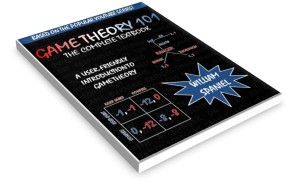With perfect Bayesian equilibrium defined, we can now start solving games using it. This lecture begins with the easy case. In a screening game, the uninformed actor moves before the informed actor. As a result, the informed actor learns nothing from the initial move—the uninformed actor cannot signal things it does not know. These are called screening games because the optimal strategy the uninformed player adopts often prompts one type to take one action and another type to take a different action. Hence, the uninformed player’s choice “screens” types.
Takeaway Points
- To draw games of incomplete information, we begin with Nature making a draw of a player’s type. The informed player observes the draw but the uninformed player does not.
- Like with games of imperfect information, we used dashed lines to indicate information sets where a player does not know what part of the tree he is in.
- When a completely informed player moves at the end of the game, backward induction solves the optimal strategy. Because nothing else happens afterward, the player should just choose the strategy that produces the best payoff.
- When the uninformed player moves before that, he must project the relative likelihoods of each type of opponent and what those types will do. He can then calculate his best expected payoff and adopt the strategy associated with that best expected payoff.
- Although perfect Bayesian equilibrium requires a belief, stating beliefs in screening games are trivial. The uninformed actor never has to update his belief, and so that belief is simply the prior belief that Nature provides.

